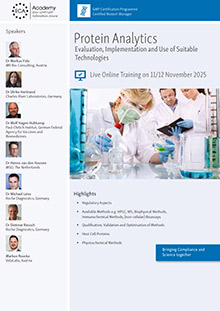End Product Testing versus Process Validation

Recommendation
5/6 February 2026
End product testing versus validation? This is a question that is frequently discussed in the GMP environment. The argument is that if the specification of the end product fits, which is even included in the marketing authorisation, then the process must also fit. Otherwise the product would not conform to the specification.
It's not just the FDA that sees things differently. But the FDA also addresses this issue directly in a Warning Letter.
The FDA criticised the fact that no process validation could be demonstrated for a product that was manufactured, released and distributed. Specifically, it was criticised that it could not be shown that the manufacturing process was controlled with regard to a constant yield with consistent quality.
The company's response is interesting. It suggested analysing the release data in terms of safety and efficacy and then showing a summary of the release data in terms of content and microbiological count.
This answer was not well received. It was criticised that the company could not demonstrate sufficient certainty that batches had sufficient strength, quality and purity. The lack of a stability monitoring plan and a plan for dealing with complaints was also criticised.
Following the FDA quotes from its Process Validation Guidance what validation means - starting with development, through the actual process validation (called PPQ in the USA) and the "stage of control" in phase three of a process validation cycle. Prior to market supply, process qualification studies are important for the FDA and subsequent monitoring of the process. As is often the case in FDA Warning Letters on the subject of process validation, the FDA Process Validation Guidance is also cited with a link.
Specifically, the FDA requires
- a complete list of all products that are still on the US market within the expiry
- a plan that provides an overview of the above-mentioned products, the responsibilities of the reserved samples and their storage. The stability programme and complaints received and how to deal with them.
- a plan for dealing with products that have quality defects, including how customer get notified and recalls are handled.
Conclusion: The argument that the final product testing shows that the manufacturing process works is not accepted in this Warning Letter. Validation is mandatory.
You can find the entire Warning Letter on the FDA website.





